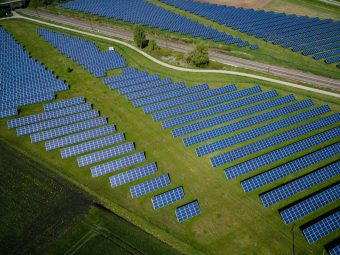
Despite being expected in summer 2023, EU member states have now finally submitted their draft updated National Energy and Climate Plans (NECPs). 26 of 27 countries have submitted, with Austria’s on hold indefinitely. The new plans are a draft update of the NECPs accepted by the European Commission in 2019.
The updated NECPs represent, by weighted average, an 87 per cent increase in solar ambition compared to the 2019 NECPs. Lithuania and Ireland stand out by multiplying their respective targets by more than 5 and 10 respectively. Poland multiplied its target by 3, while Finland, Portugal, Slovenia, and Sweden more than doubled their previous targets, with Spain increasing its target by 95 per cent.
Despite the boost in ambition, the NECPs do not reflect the investments needed for grid deployment, flexibility, and digitalisation. While most NECPs at least partially mention flexibility, only four provide a real target for demand-side flexibility via smart-meter roll-out or demand-side response (BE, BG, CY, HR).
This demand-side gap risks discouraging citizens’ adaptation to the new energy reality. Europeans should be supported to flex their energy use sensibly and consume electricity when it is abundant – like charging e-vehicles in the middle of the day. Though overlooked in NECPs, demand-side tools should be used to ease pressure on the grid and support the system to add more renewables. Demand-side flexibility means less investment is needed for slow-to-build grid infrastructure.
More:
- NEW REPORT UNVEILS INVESTMENT OPPORTUNITIES FOR SOLAR IN OMAN
- WHAT IS THE SUN TAX AND WHY SOME COUNTRIES “PUNISH” THEIR PROSUMERS?
- SOLAR ENERGY FOR SCIENTIFIC RESEARCH IN AUSTRALIA
When it comes to energy storage, 9 countries have defined dedicated targets in terms of MW, MWh or euros (BE, BG, CY, EL, ES, HR, HU, LT, PT). Among these 9 countries, 4 of them (BE, EL, LT, PT) have gone further with dedicated targets for batteries, small-scale storage or storage at household level. Most EU countries, however, fail to plan to empower the use of renewables 24/7, day or night.
Though a lack of storage infrastructure, or demand-side response, will undoubtedly and unnecessarily put pressure on the electricity grid, only 2 EU countries have set a target or an investment plan for their distribution electricity grid – France and Malta. While 20 countries have at least partially acknowledged the investment needs at transmission – high-voltage – level, only France and Malta have set out plans to invest in the distribution grid. France intends to increase the investment in its distribution grid by 20 per cent by 2032, while Malta mentions a series of investment in equipment for the upgrade of the grid.
Based on current ambition, the EU would see 626 GW total ambition by 2030, compared to the EU Solar Strategy target of 750 GW and of the industry potential of 902 GW. With the draft NECPs submitted to the European Commission, Member States now have until June 30th to submit any updates before their plans are considered final.
Source: Solar Power Europe



